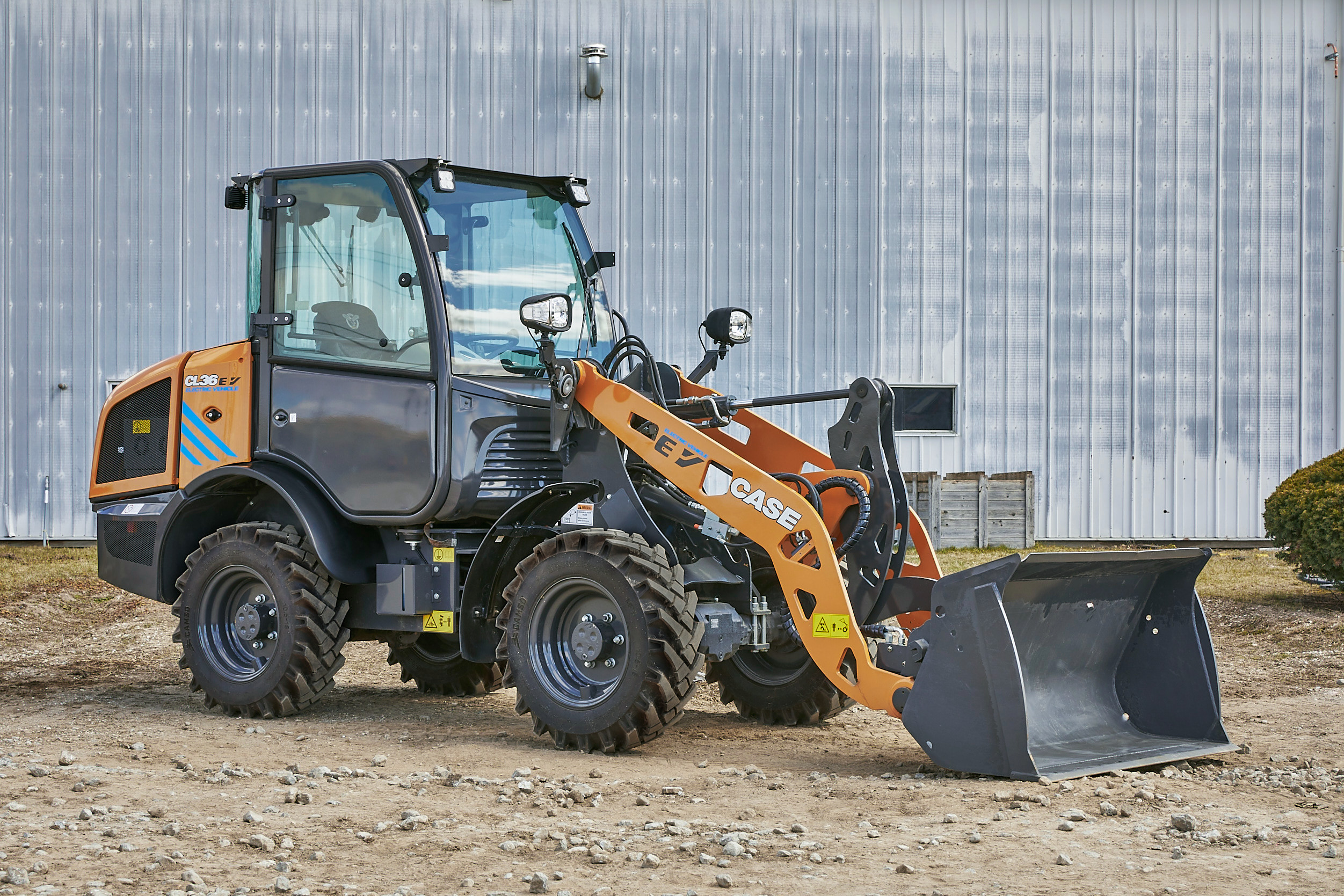
Case Construction Equipment has expanded its electric vehicle toolbox with the commercial release of its 580EV, an electric backhoe loader.
Case’s EV backhoe loader will soon be followed by the commercial availability of two additional EV machines — the CX25EV 2.5-metric ton mini excavator and the CL36EV 3.6-metric ton compact wheel loader. The new equipment increases Case’s EV lineup to five models, including the previously launched CX15EV electric mini excavator and the SL22EV small articulated loader.
The next generation of EV equipment from Case offers crews zero-emissions, low-noise solutions for a wide range of unique jobsite demands — from overnight construction, to work in urban centers or other close-quarter environments where noise and emissions must be kept to a minimum. The expanded Case EV offering matches the performance and power of its diesel counterparts while delivering unique advantages like lower fuel costs and less maintenance.
“Case EV offerings are all about unlocking more opportunities for our customers, and we work harder than anyone to give them every tool in the toolbox to succeed on the jobsite,” says Terry Dolan, vice president, North America, Case Construction Equipment. “With the 580EV electric backhoe loader, we took an industry staple and designed it as a purpose-built EV to help crews meet increasingly unique jobsite demands and win more contracts on projects that prioritize sustainability criteria.”
The new Case 580EV electric backhoe loader carries over the same dimensional loading and digging specifications and delivers the same breakout forces as the popular four-wheel-drive, 97-horsepower Case 580SN diesel model — marking an upgrade in performance since Case first debuted its Project Zeus electric backhoe concept at CONEXPO in 2020. With this new production unit, Case took customer feedback and optimized everything from thermal management to operator controls in order to electrify a machine with comparable specs to the widely used 580SN. Case also included new features like an 8-inch color display, air conditioning, a front-dash display and adjustable four-corner, multicolored LED strobe lights.
Powered by a 400-volt, 71-kilowatt-hour lithium-ion battery platform that’s charged with the same type of Level 2 J1772 adapter found in automotive EVs, the new electric backhoe loader is designed to deliver up to eight hours of operational run time on a single charge, depending on the application. The battery platform also uses an advanced thermal management system with system-specific cooling circuits to better regulate temperatures and help maintain performance in hot or cold conditions.
“Designing this machine from day one as a purpose-built EV instead of a retrofit has enabled a slew of practical innovations that will positively change the mindset for teams considering EV equipment,” says Brad Stemper, product management lead, North America, Case. “We looked at every aspect of the machine and enhanced power consumption throughout to deliver exceptional EV performance that operators will see and feel when digging, loading or moving dirt.”
The four-wheel-drive 580EV uses two independent electric motors for the PowerDrive transmission and hydraulic pumps feeding the loader, backhoe and steering systems to minimize energy consumption and improve performance in loading applications. The 14-foot backhoe also includes an Extendahoe to boost reach, while features like ProControl swing dampening, PowerLift/PowerBoost and electrohydraulic controls improve precision and ease of use on the jobsite. Electrification also provides performance advantages like instantaneous torque response and peak torque at any RPM, so operators don’t need to wait for an internal combustion engine to ramp up to meet load demands.
In the cab, Case offers features like energy-efficient heating and air conditioning, an 8-inch touchscreen display, customizable work mode/sensitivity settings, push-button start and operator security codes. Multicolored, four-corner strobe lights also let operators work safely and meet regulatory requirements, with adjustable colors, strobe patterns and an “always-on” feature for low-light conditions when strobes are not needed.

In addition to the 580EV electric backhoe, Case will also make two more EV models commercially available in the coming months. The Case CX25EV electric mini excavator and the Case CL36EV electric compact wheel loader will round out the Case EV lineup for a total of five machines.
A bigger, more powerful version of Case’s existing electric mini excavator, the 2.5-metric ton CX25EV delivers emissions-free performance and maneuverability well-suited for urban and infrastructure sites with high traffic. This highly versatile machine includes hydraulic flow settings and up to three auxiliary circuits that can be paired with a variety of quick couplers and attachments. It’s also equipped with electrohydraulic controls and a short-radius design, making it easy to maneuver in tight spaces.
The 3.6-metric ton Case CL36EV electric compact wheel loader delivers the same power and performance as comparably sized diesel-powered loaders, along with simplified maintenance and lower lifetime total cost of ownership. This versatile machine can be matched with a full range of attachments and features a hinge-pin height of over 10 feet, making it an ideal solution for supply yards, large-scale building renovations or projects where indoor operation is required.
“These new machines set a new benchmark in electrification and sustainable construction, and they’re a testament to our customer-centered approach to practical innovation as we expand our product portfolio,” Dolan says. “Complementing our diesel lineup, electrification brings real-world solutions to unique jobsite demands, helping urban construction contractors, utility teams, municipal crews and other contractors further improve productivity, efficiency and their bottom line.”
Latest from Lawn & Landscape
- Bartlett Tree Experts gave away 50,000 tree seedlings for Arbor Day
- Connect, Control & Conserve with Horizon Technical Services
- Use Horizon's Parts Hotline
- How I built a Top 100 company
- Horizon’s Exclusive TurfGro Fertilizer
- Grow your business with mosquito control
- LandCare adds 2 branches in SoCal, promotes Aleman to branch manager
- Spray them away





